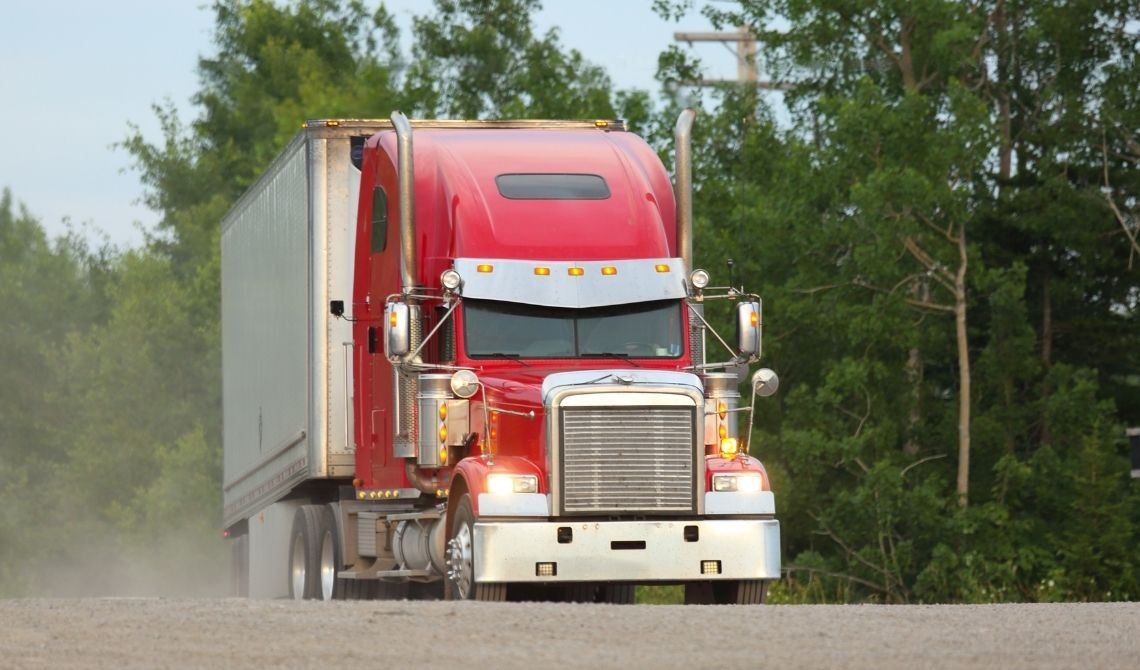Understanding Heavy-Duty Air Springs Benefits, Applications, and Maintenance Guide
Introduction to Heavy-Duty Air Springs
Heavy-duty air springs are essential components that play a crucial role in various industries requiring robust and reliable suspension systems. These advanced systems are designed to handle extreme loads, provide better stability, and improve the comfort of vehicles and equipment operating under high-stress conditions. From trucks and trailers to industrial machinery, heavy-duty air springs are widely used to absorb shock, reduce vibration, and maintain the desired ride height, no matter the load or terrain.
The purpose of this article is to explore the world of heavy-duty air springs, understanding their construction, the benefits they bring to various industries, and how they work to enhance safety and performance. Whether you’re an engineer, fleet owner, or someone interested in advanced suspension technologies, this guide will provide a detailed understanding of heavy-duty air springs and why they are an essential part of modern mechanical systems.
Stay with us as we dive deeper into the importance and functionality of heavy-duty air springs, and how they can make a real difference in your operations.
What are Heavy-Duty Air Springs?
Heavy-duty air springs, also known as air bags, are flexible, inflatable components used in suspension systems to support heavy loads while maintaining stability and comfort. They consist of a rubberized fabric envelope that can be inflated with air, allowing the spring to expand and compress based on the load it is supporting. This air-filled cushion acts as a buffer, absorbing shock and reducing vibration from the road or ground, which is especially important in industries dealing with large, heavy vehicles or equipment.
These air springs are typically used in place of traditional metal coil springs or leaf springs, providing superior performance in terms of load-bearing capacity, ride quality, and durability. The air within the spring allows for precise control over the suspension’s height and firmness, adapting to different loads and conditions with ease.
Heavy-duty air springs are designed to handle much higher pressures than standard air springs, making them suitable for industrial vehicles, construction machinery, and heavy-duty trucks. Their robust construction ensures that they can withstand extreme environments, such as high temperatures, intense vibration, and heavy impacts, while maintaining their ability to absorb shock and improve overall system performance.
Key Benefits of Heavy-Duty Air Springs
Heavy-duty air springs offer a wide range of benefits that make them a preferred choice for various industrial and commercial applications. Here are some of the key advantages:
-
Enhanced Load Capacity and Stability
Air springs can be inflated to provide precise control over the load they support. This allows them to carry heavier loads without compromising stability, ensuring a safe and smooth ride, even under extreme conditions. The ability to adjust air pressure ensures that the suspension system adapts perfectly to varying loads.
- Improved Ride Comfort
One of the most notable benefits of heavy-duty air springs is their ability to provide a smoother ride. By absorbing shock and reducing vibrations, air springs make it easier for vehicles and machinery to traverse rough terrain, improving comfort for both the driver and passengers, as well as reducing wear on other parts. - Durability and Longevity
Unlike traditional metal springs, heavy-duty air springs have fewer moving parts, reducing wear and tear over time. They are also designed to handle the extreme stresses that come with heavy loads and tough environments, offering a longer lifespan and better reliability, especially when maintained properly. - Cost-Effectiveness
While the initial cost may be higher than traditional suspension systems, the longevity and reduced maintenance costs make heavy-duty air springs a cost-effective solution. They reduce the need for frequent repairs and replacements, saving money in the long run.
These benefits make heavy-duty air springs an ideal choice for vehicles and equipment that need to endure tough working conditions.
Applications of Heavy-Duty Air Springs
Heavy-duty air springs are versatile components used across a wide array of industries, offering reliable performance in demanding environments. Here are some of the primary applications where these air springs play a vital role:
-
Heavy-Duty Trucks and Trailers
Air springs are commonly used in the suspension systems of trucks and trailers, helping to manage the heavy loads they carry. They ensure a smooth ride and maintain proper load distribution, which is crucial for safety and efficient handling, especially when transporting goods over long distances.
- Industrial Machinery and Equipment
In industries like manufacturing and mining, air springs are used to support large machinery and equipment that must operate under significant pressure. They help reduce vibrations, improve stability, and protect sensitive machinery from wear, extending the lifespan of both the equipment and the components. - Public Transportation Systems
Buses, coaches, and trains use heavy-duty air springs to ensure a comfortable ride for passengers. The air springs absorb shock from uneven roads or tracks, providing a smoother and quieter experience, which is important for long-distance travel and public transit systems. - Agricultural Machinery
Air springs are also employed in agricultural vehicles such as tractors and harvesters. These machines often operate on rough, uneven terrain, and air springs help reduce the impact of the terrain, improving both the ride comfort and the longevity of the equipment. - Military and Construction Vehicles
Military vehicles and construction equipment often operate in harsh, unpredictable environments. Air springs offer enhanced durability and flexibility, helping these vehicles navigate rough terrain while maintaining stability and minimizing wear on critical components.
The adaptability of heavy-duty air springs makes them invaluable in any application where load-bearing, shock absorption, and ride quality are crucial. Their ability to adjust to different load weights and conditions makes them an indispensable part of modern machinery.
How Do Heavy-Duty Air Springs Work?
Heavy-duty air springs operate based on the simple principle of compressed air, but their effectiveness comes from their design and how they adjust to various load conditions. Here’s a breakdown of how they work:
-
Air Pressure Regulation
At the core of an air spring is a flexible rubber and fabric structure that contains air under pressure. The amount of air in the spring is adjustable, which directly influences the spring’s stiffness and load-bearing capacity. When the load on the vehicle or equipment increases, more air is added to the spring to support the additional weight, ensuring the system remains stable and balanced.
- Absorption of Shock and Vibration
As the air spring inflates or deflates based on the load, it absorbs the shocks and vibrations that result from uneven surfaces, rough roads, or heavy impacts. The compressible air cushion within the spring helps to smooth out the ride by distributing forces evenly across the system. This minimizes the effect of jolts and bumps, improving overall comfort and reducing stress on other components. - Adjustable Suspension
Air springs allow for dynamic suspension adjustments. For instance, when a vehicle is heavily loaded, the air pressure in the springs can be increased to ensure the vehicle maintains the correct ride height and proper suspension stiffness. Conversely, for lighter loads, the pressure can be reduced, providing a softer and more comfortable ride. - Height Control Systems
Many air spring systems include automatic height control mechanisms. These systems adjust the air pressure in real-time, ensuring that the vehicle or machinery maintains a consistent height regardless of the load. This is especially important for vehicles like trucks and buses, where maintaining level alignment is essential for handling and safety.
Through these mechanisms, heavy-duty air springs provide a versatile, reliable suspension system capable of handling heavy loads and reducing vibrations in tough environments. Their ability to adapt to different conditions makes them ideal for use in a variety of industries.
Choosing the Right Heavy-Duty Air Spring
Selecting the right heavy-duty air spring is critical for ensuring optimal performance, safety, and longevity of your suspension system. There are several key factors to consider when making your choice:
-
Load Requirements
The primary factor in choosing an air spring is the weight it will need to support. You must determine the maximum load capacity of the vehicle or equipment and select an air spring that can handle it without compromising the system’s stability. Ensure that the spring can adjust to varying loads, especially in industries like trucking or construction where weights may fluctuate.
- Size and Fit
Air springs come in various sizes, so it’s important to choose one that fits the dimensions and requirements of your suspension system. You’ll need to measure the available space in the vehicle or equipment where the air spring will be installed. Selecting a spring that is too large or too small can lead to performance issues or damage to other components. - Durability and Material
Heavy-duty air springs are made from materials like reinforced rubber or synthetic fabrics designed to withstand extreme conditions. Look for air springs with high-quality construction, particularly those that are resistant to abrasion, UV damage, and ozone deterioration. The durability of the materials is essential, particularly for applications in harsh environments like construction or agriculture. - Environmental Conditions
Consider the operating environment of the air spring. If the air spring will be exposed to extreme temperatures, chemicals, or corrosive elements, choose one that is designed to withstand those conditions. Some air springs are specifically built for high-temperature environments or those that encounter exposure to road salts and other harsh substances. - System Compatibility
Make sure that the air spring is compatible with your existing suspension system. This includes checking if the pressure requirements, load capacity, and installation features match the specifications of your vehicle or machinery. Some air spring systems come with automatic height control, while others may require manual adjustments. Be sure to select one that integrates well with your setup.
By evaluating these factors—load capacity, size, material quality, environmental durability, and system compatibility—you can choose the most suitable heavy-duty air spring to enhance performance and ensure long-lasting reliability.
Maintenance and Care for Heavy-Duty Air Springs
To ensure that heavy-duty air springs continue to function effectively and last as long as possible, regular maintenance and proper care are essential. Here are some key steps to keep your air springs in top condition:
-
Routine Inspections
Regular inspections are critical for identifying any wear or damage to the air springs. Check for signs of cracks, punctures, or bulging in the rubber, as these can lead to air leakage or compromised performance. Inspect the air lines for any signs of corrosion or leaks. It’s also important to check for debris buildup around the air springs, which could hinder their movement.
- Cleaning and Lubrication
Keeping the air springs clean is important for preventing dirt and debris from affecting their performance. Use a soft cloth to wipe the surface and remove any built-up grime. If the air spring is exposed to harsh environments like mud or chemicals, cleaning it regularly will help maintain its integrity. Additionally, lubricating the air spring’s moving parts, such as the piston, will help reduce friction and extend its lifespan. - Checking Air Pressure
Monitoring and adjusting the air pressure within the springs is crucial for maintaining proper suspension. Regularly check that the air pressure is set according to the manufacturer’s specifications for load-bearing and ride comfort. Under-inflation can lead to reduced performance, while over-inflation may cause damage to the spring. An accurate air pressure gauge is essential for this step. - Protecting from Extreme Conditions
Exposure to extreme temperatures, road salts, and other harsh environmental conditions can shorten the lifespan of air springs. If possible, park vehicles in covered or sheltered areas to protect the air springs from direct exposure to the elements. For vehicles operating in areas prone to extreme temperatures, consider using air springs that are designed to withstand such conditions. - When to Replace Air Springs
Over time, air springs will naturally degrade due to repeated compression and expansion. If you notice a decrease in ride quality, an uneven height adjustment, or visible damage, it may be time to replace the air spring. Replacing a worn-out air spring promptly can prevent damage to other suspension components and ensure continued safe operation.
By following these maintenance guidelines, you can help extend the life of your heavy-duty air springs and ensure they continue to provide reliable performance for your vehicle or equipment.
Future of Heavy-Duty Air Springs
The future of heavy-duty air springs looks promising, with ongoing advancements in technology and design. As industries continue to evolve and demand more efficient, sustainable solutions, air springs are adapting to meet these new challenges. Here are some trends and innovations shaping the future of heavy-duty air springs:
-
Advancements in Material Technology
One of the key areas of development is the improvement of materials used in the construction of air springs. Manufacturers are exploring new, stronger, and more flexible materials that can better withstand extreme temperatures, corrosive environments, and heavy loads. These materials aim to enhance durability and performance while reducing the overall weight of air springs, making them even more effective.
- Smart and Automated Air Springs
The integration of smart technology into air spring systems is on the rise. Smart air springs equipped with sensors and automation capabilities can monitor pressure levels, adjust ride height, and even predict maintenance needs in real time. This technology improves the overall performance of the suspension system by adapting to changes in load and road conditions automatically, leading to increased safety and efficiency. - Sustainability Trends
As industries shift toward more eco-friendly practices, the manufacturing processes and materials used in air springs are becoming more sustainable. Manufacturers are focusing on creating air springs that use recyclable materials, reduce waste during production, and are designed for longer lifespans to minimize environmental impact. Additionally, there is a growing trend to optimize energy efficiency in air spring systems, reducing the energy needed to operate them. - Enhanced Load Management Systems
The future of heavy-duty air springs also involves innovations in load management and distribution. As vehicles and machinery become more complex, air spring systems are evolving to better distribute weight and provide even more precise control over load-bearing. This is particularly important for industries like transportation and construction, where safety and efficiency are top priorities. - Integration with Electric and Autonomous Vehicles
As electric and autonomous vehicles become more common, heavy-duty air springs will play a vital role in supporting the specific requirements of these systems. Air springs can provide the smooth ride and adjustable suspension that electric vehicles (EVs) need to handle varying loads while ensuring stability. In autonomous vehicles, smart air spring systems will help optimize ride quality, reduce wear on critical components, and enhance overall passenger comfort.
The future of heavy-duty air springs is set to bring even more innovative solutions, driven by the need for improved performance, sustainability, and smart technology. As industries continue to grow and evolve, air springs will remain at the forefront of providing advanced, reliable suspension solutions.
For detailed information, you can contact us at torqueusa.com


